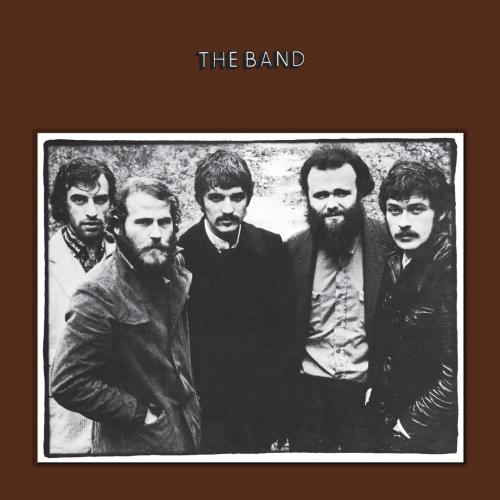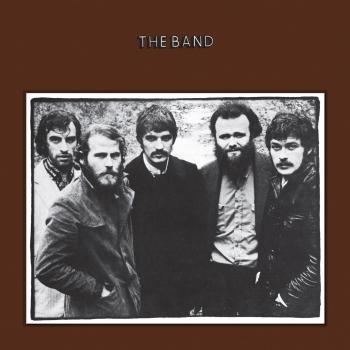
The Band (Remastered Expanded Edition/Remixed 2019) The Band
Album Info
Album Veröffentlichung:
2019
HRA-Veröffentlichung:
15.11.2019
Das Album enthält Albumcover
Entschuldigen Sie bitte!
Sehr geehrter HIGHRESAUDIO Besucher,
leider kann das Album zurzeit aufgrund von Länder- und Lizenzbeschränkungen nicht gekauft werden oder uns liegt der offizielle Veröffentlichungstermin für Ihr Land noch nicht vor. Wir aktualisieren unsere Veröffentlichungstermine ein- bis zweimal die Woche. Bitte schauen Sie ab und zu mal wieder rein.
Wir empfehlen Ihnen das Album auf Ihre Merkliste zu setzen.
Wir bedanken uns für Ihr Verständnis und Ihre Geduld.
Ihr, HIGHRESAUDIO
- 1 Across The Great Divide (Remix / 2019) 02:54
- 2 Rag Mama Rag (Remix / 2019) 03:08
- 3 The Night They Drove Old Dixie Down (Remix / 2019) 03:37
- 4 When You Awake (Remix / 2019) 03:26
- 5 Up On Cripple Creek (Remix / 2019) 04:41
- 6 Whispering Pines (Remix / 2019) 04:00
- 7 Jemima Surrender (Remix / 2019) 03:33
- 8 Rockin’ Chair (Remix / 2019) 03:43
- 9 Look Out Cleveland (Remix / 2019) 03:10
- 10 Jawbone (Remix / 2019) 04:21
- 11 The Unfaithful Servant (Remix / 2019) 04:18
- 12 King Harvest (Has Surely Come) (Remix / 2019) 03:39
- 13 Up On Cripple Creek (Earlier Version) 03:19
- 14 Rag Mama Rag (Alternate Version) 03:53
- 15 The Unfaithful Servant (Alternate Version) 04:50
- 16 Look Out Cleveland (Instrumental Mix) 03:10
- 17 Rockin’ Chair (A Cappella / Stripped Down) 03:44
- 18 Up On Cripple Creek (Instrumental Mix) 04:49
Info zu The Band (Remastered Expanded Edition/Remixed 2019)
50th Anniversary Edition: When The Band's seminal eponymous second album was released fifty years ago on September 22, 1969, not much more was known about the reclusive group than when they released their landmark debut, Music From Big Pink, to widespread critical praise and bewilderment, just the year before. The band, made up of four Canadians and one American, was still shrouded in mystery, allowing for listeners and the music press to let their imaginations run wild about who these men were and what this music was that sounded unlike anything else happening at the close of the psychedelic '60s. Dressed like 19th century fire-and-brimstone preachers and singing rustic, sepia-toned songs about America and the deep south, The Band was an enigma, unlike any group that came before or after. And their self-titled "Brown Album," as it would lovingly be called, cemented their status as one of the most exciting and revolutionary bands in years, on the strength of now-classic songs like "The Night They Drove Old Dixie Down," "Up On Cripple Creek" and "Rag Mama Rag."
Clearmountain and Robertson's approach to remixing the beloved album was done with the utmost care and respect for the music and what The Band represents. "The idea was to take you deeper inside the music, but this album is homemade," Robertson says in the liner notes. "You can't touch up a painting. It has nothing to do with what you get when you go into a recording studio." When he expressed his concerns to Clearmountain, the renowned engineer and producer reassured him: "We're just trying to overcome the original technological limitations in order to bring you closer into the room," he explained. "I'm going to do everything in my power not to get in the way of this music at all." The result is a new mix that allows listeners to hear these classic songs in stunning, and often times startling, clarity, packing more of a sonic and emotional punch than ever before. The included early and alternate versions offer fans the ability to hear the evolution of these tracks or as Robertson says, "That's us trying to teach ourselves how to play these songs."
After more than eight years of playing together, first as members of Ronnie Hawkins' backing band, the Hawks, then as Levon & the Hawks and then as Bob Dylan's backing band on his infamous 1965-66 tour, where they were booed nearly every night as they helped Dylan transition from folk to electric rock on his pivotal tour, Robertson, Danko, Manuel, and Hudson found a sanctuary in West Saugerties, New York at a house they dubbed "Big Pink." Here they were able to get away from the chaos of the Dylan tour and work on their own music, often in the company of Dylan, who lived in nearby Woodstock. Over the next year, the foursome woodshedded songs and in this communal house had a relaxed, productive environment where they were free to create whenever the mood struck. In October 1967, Helm, who left the Dylan tour to return home to the south for a stint, re-joined his friends and The Band was born. The group wrote new music and prepared to record their first full-length album. Out of this also sprung "The Basement Tapes" with Dylan.
Released in 1968, The Band's game-changing debut album, Music from Big Pink, seemed to spring from nowhere and everywhere. Drawing from the American roots music panoply of country, blues, R&B, gospel, soul, rockabilly, the honking tenor sax tradition, hymns, funeral dirges, brass band music, folk, and rock 'n' roll, The Band forged a timeless new style that forever changed the course of popular music.
Shortly after the release of Music From Big Pink, bassist Rick Danko broke his neck in a serious car crash and was in traction resulting in The Band's inability to tour. This only fueled the mystique as they had yet to play live and had only done a few mysterious interviews, including a Rolling Stone cover story featuring a photo of them with their backs to the camera. Once Danko was healed, the guys relocated to Los Angeles to record their follow up album. Searching for the same clubhouse vibe they had at Big Pink, they eschewed a traditional studio and moved into a house in the Hollywood Hills that had previously been owned by Sammy Davis Jr. The place had enough bedrooms that the group could reside there with their families and a pool house where they set up the studio. While Capitol Records was dumbfounded the guys didn't want to record in one of their state-of-the-art studios down the street, they ultimately relented and paid for the shipment of their equipment across the country. Recording here was not without its obstacles as getting an upright piano up to the house proved trying and since they were in a residential neighborhood, the pool house needed to be soundproofed from the outside, which was quite a sight.
Following dinner together with their families in the main house, The Band, joined by co-producer John Simon who helped shape their sound, as on their debut, would shuffle off to their makeshift studio to write and record their masterpiece, working through the night and stopping around dawn. Listening to these dusty, rural songs, it's hard to believe they weren't written in the Appalachian Mountains but instead perched up in the hills overlooking Los Angeles' sprawling, smoggy metropolis.
It's fitting then that the first song the group recorded for the album was "The Night They Drove Old Dixie Down," a Civil War story that was inspired by a visit Robertson made to Helm's family in Marvell, Arkansas.
During one of their talks, Helm's father insisted to Robertson that "The South will rise again!" "I felt that I understood something about Levon from meeting his family," Robertson says. "I wanted to write a song that he could sing better than anyone in the world." The song imbues the people of the South with a forlorn dignity much in contrast to their stereotypical portrayals in popular culture – and Helm's heart-rending vocal tells the song's story with consummate grace. ...
Garth Hudson, keyboards, piano, horn
Levon Helm, drums, vocals, mandolin
Richard Manuel, keyboards, vocals, drums
Rick Danko, bass, vocals, fiddle
Robbie Robertson, guitar, piano, vocals
Digitally remastered
THE LAST WALTZ is the document of the Band's 1976 farewell performance, filmed as a documentary by Martin Scorsese, capturing the all-star concert for posterity. Sort of a rock version of "This Is Your Life," THE LAST WALTZ brought together performers from all phases of the group's career, giving them a chance to pay tribute and jam with the Band one last time. Many of the group's classics are reprised, but there are some notable standouts. Legendary Canadian rocker Ronnie Hawkins, who the Band backed in their early days as The Hawks, offers "Who Do You Love." After their tenure with Hawkins, the group went on to accompany Bob Dylan on some of his earliest electric sessions. Dylan returns the favor by performing a strong folk-blues medley beginning and ending with a fiery, rocking version of "Baby Let Me Follow You Down." Muddy Waters gives a lesson in the blues on "Mannish Boy," with the late great Paul Butterfield on harmonica. Eric Clapton offers his own polished version of the blues with a blistering "Further On Up The Road." Emmylou Harris, a highlight in any setting, duets on the gentle waltz "Evangeline." Dr. John's accurate and rousing "Such A Night" brings a bit of Mardi Gras to the proceedings. Joni Mitchell provides another pleasant change of pace, introducing her jazz-inflected sound with "Coyote," and joining in on soulful soaring harmonies with Neil Young on his classic "Helpless." Even Neil Diamond joins in on the fun, on a song he co-wrote with Robbie Robertson (who produced Diamond's BEAUTIFUL NOISE). Although not the last track on the disc, the Dylan-led all-star rendition of the Band/Dylan classic "I Shall Be Released" is the emotional climax of one of the most important performances in contemporary music.
Dieses Album enthält kein Booklet


















